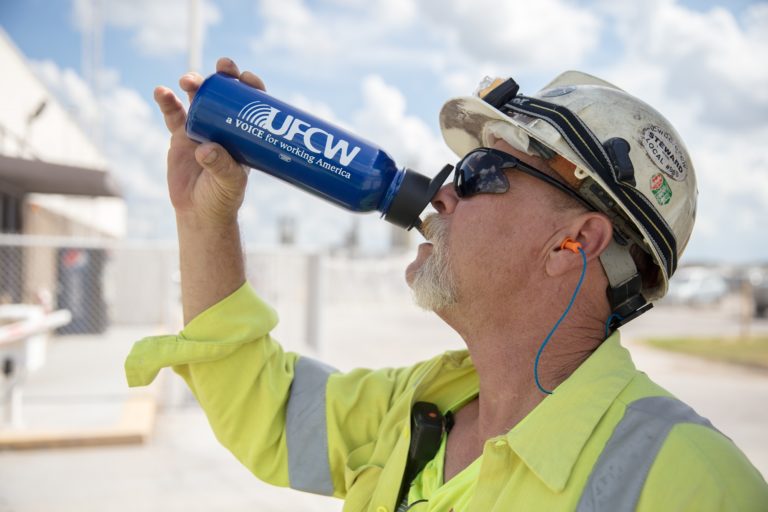
With outside temperatures soaring and with many workers wearing more PPE than their job would usually require, it is more important than ever this year that employers and workers stay vigilant about preventing heat illness at work.
 The use of personal protection equipment (PPE) to keep workers safe from COVID-19 is essential for public safety, but does increase the chance of overheating. The use of PPE may trap heat and perspiration on the body’s surface and increase the core body temperature to dangerous levels. Given the dual challenge of moderating the risks of heat stress and exposure to COVID-19, it’s imperative that employers take measures to protect workers who are exposed to heat. For example, employers may need to supply replacement masks more often, since masks may get damp and contaminated in the heat and humidity.
The use of personal protection equipment (PPE) to keep workers safe from COVID-19 is essential for public safety, but does increase the chance of overheating. The use of PPE may trap heat and perspiration on the body’s surface and increase the core body temperature to dangerous levels. Given the dual challenge of moderating the risks of heat stress and exposure to COVID-19, it’s imperative that employers take measures to protect workers who are exposed to heat. For example, employers may need to supply replacement masks more often, since masks may get damp and contaminated in the heat and humidity.
To prevent heat illness, employers should make sure all workers should have access to:
• Adequate amounts of drinking water.
• Regular rest breaks or rest periods in a cool area.
• Regular bathroom breaks, as necessary.
• Increased air circulation through the use of air conditioning, fans and general ventilation.
• Education on the early signs of heat-related illness.
• Time to acclimatize to the heat. It takes about one week for the body to adjust to
working in the heat.
Hot weather safety strategies should include:
• Training all management and hourly employees with an emphasis on how to
recognize a medical emergency (heat stroke).
• Having a clearly written protocol on how to respond to a medical emergency.
• Training all management and hourly employees on workers’ right to access
drinking water, as needed, and the right to access bathrooms, as needed.
• Monitoring particularly hot work areas and a plan in place for when the heat
index approaches the extreme caution zone.
Two major heat-related illnesses are heat exhaustion and heat stroke. Heat exhaustion, if left untreated, may progress to deadly heat stroke. The symptoms of heat exhaustion and heat stroke are listed below:
| Heat Exhaustion | Heat Stroke |
|
|
